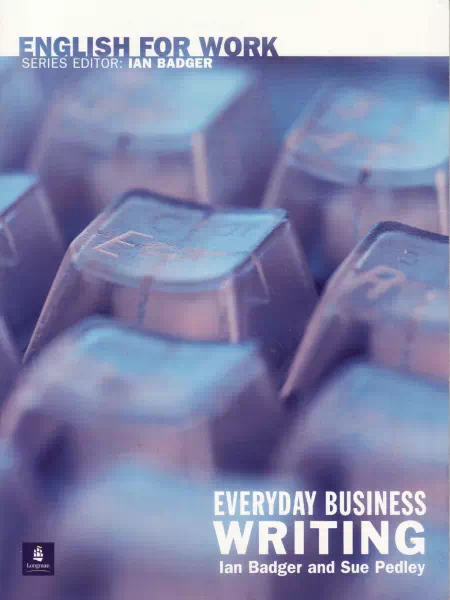English for Work: Everyday Business Writing PDF download

Everyday Business Writing is designed for students with an intermediate level of English and can be used in both classroom settings and for self-study. The book aims to enhance written communication skills by providing and practicing the language and expressions necessary for effective communication in various business situations.
Everyday Business Writing offers:
- Essential language and vocabulary presented in context
- Examples of various written forms, including emails, letters, reports, and memos
- Helpful notes to explain important language points
- A range of practice exercises with provided answer keys
- A glossary section at the end of the book, with space for translations into your own language
English for Work is a new series of books designed to provide the language skills needed in the everyday workplace.
Everyday Business Writing This book is suitable for anyone who uses English in the business world or for students studying vocational English in adult education classes, schools, colleges, and universities. It focuses on everyday business writing, which, in today’s world, is typically conducted via email. However, it also includes examples of other types of writing, such as letters, memos, telephone messages, and cover notes.
Emails are often short and can be very informal. However, even if informal, they should still be accurate, appropriate, and easy to understand. Emails can also be formal; for instance, when writing to someone for the first time, an email may be as formal as a letter. There is no universal style for email writing, and the book reflects this by presenting a range of language styles. Note the use of contractions: some prefer to use them (e.g., “I’ll call you”), while others use full forms (e.g., “I will call you”). In more formal letter writing, full forms are generally recommended, but in emails, either style is acceptable.
Other titles in this series that you might find helpful:
How to Use the Book Begin with Unit 1, “The Basics,” which sets out the foundational guidelines for writing emails, including examples of style and layout. You can either progress through the book unit by unit or select one that addresses your immediate needs. Note that most examples focus on the body of the email, and elements such as the “Subject” and “To/From” boxes may not always be included.
Use the contents page to locate different types of written documents. Start each chapter by reviewing the “Useful Phrases,” then read the texts and study the accompanying notes. While certain phrases are highlighted for their distinctive features, it is also beneficial to note other phrases that appear, as they are equally significant and can serve as key phrases. Use a dictionary to check your understanding and refer to the appendices at the back of the book.
The notes pages provide information on some differences between everyday British and American usage. After reviewing the texts and notes, complete the exercises, referring back to the texts and notes as needed. The answers to the exercises can be found at the end of the book.
Lastly, refer to the glossary at the back of the book and test your understanding of the highlighted key expressions. Write translations of these expressions, using a dictionary if needed. Visit the “English for Work” pages on the Longman website for translations of the glossary in selected languages.
This book can be used for self-study or with a teacher. Good luck, and enjoy building your “Everyday Business Writing” skills!
Some recommended materials to accompany the English for Work series:
- Longman Business English Dictionary
- Penguin Quick Guides: Business English Phrases
- Penguin Quick Guides: Business English Verbs
- Penguin Quick Guides: Business English Words
Contents
- Book
Format:PDF
Size: 59 MB
Pages:95
Series:English for Work
Date:2003
DOWNLOAD
English for Work: Everyday Business Writing PDF
the link is inactive…
fixed